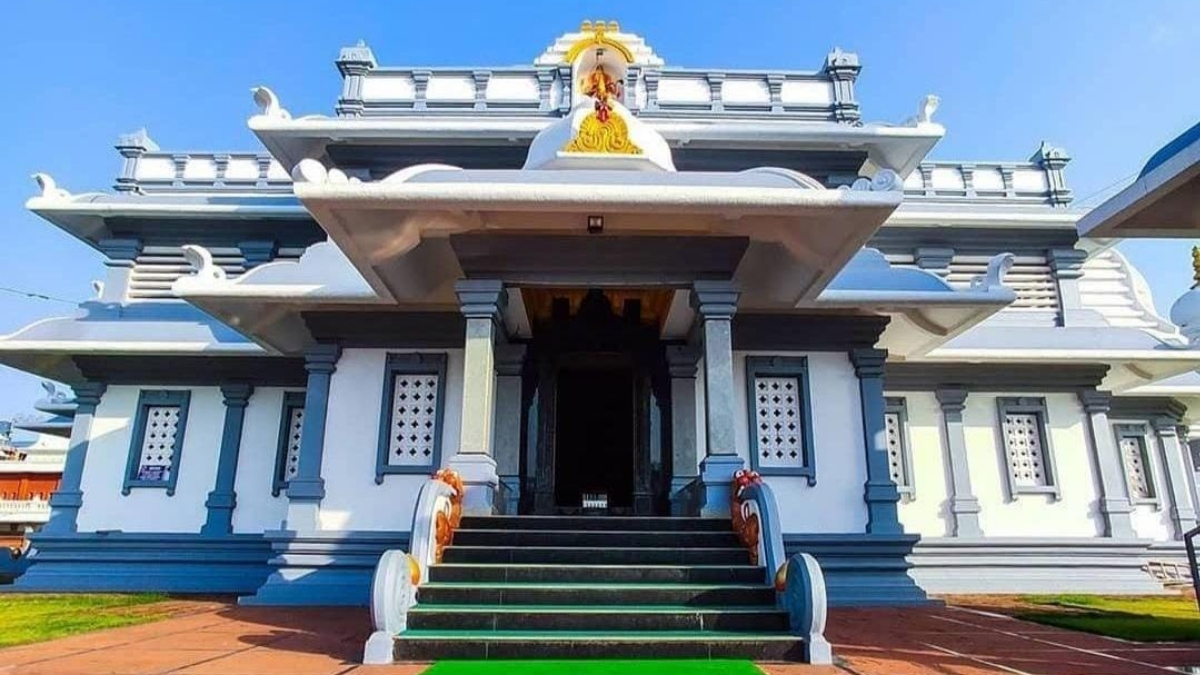Mahalasa is the Mohini avatar of the Hindu god Vishnu. She is also known as Mhalshi and Mahalasa. In Newasa, Goa and elsewhere, Mahalasa is considered as the Mohini form of Lord Vishnu and hence she is referred to as “Mahalasa Narayani”. The deity, it may particularly be noted, also wears the holy thread, which is its unique feature. This holy thread is only worn by Brahmin men and also the male gods. No other goddess in the Hindu Pantheon wears this kind of thread except goddess Mahalasa and goddess Parvati. Mahalasa is the Kuldevi (family goddess) of some 96K Khatriyas(Dessai’s) and many Konkani Saraswat Brahmins, Karhade Brahmins, Daivajna Brahmins, (Arya Vaishyas-also known as Shetti) Bhandaris. Many families of different caste or communities. The temple of Goddess Mahalasa had been on the plateau of Verna village Mardol in Salcette taluka from ancient times long before the advent of the Portuguese rule in this part of Goa.
The entire habitation was historically known as VARENYAPUR or VARUNAPUR and the premises on the beautiful lush green plateau of this village where the remnants of that magnificent edifice of the temple are still seen, was later known as Mardol. There is no historical evidence or any record available to decide as to when this temple was founded at this place in Varenyapur.
Its mythological reference is found in Skand Purana. It is the largest of all Puranas and is believed to have been written between seventh and ninth century A. D. In this Purana, there are two Adhyayas (Chapters) entitled “Varunapur Mahatmya” in the section of Sahyadri Khand and the legend of Shree Mahalasa of Varunapur is narrated in these two Adhyayas. It runs as below :
Varunapur is a very beautiful, rich place abundant with precious gems. Once upon a time, the people of the place performed JYOTISTOM YADNYA to invoke Divine Blessings for the welfare of the people. During the performance, Parashuram made an appearance before the devotees who became ecstatic at his sight. Parashuram then instructed Varuna to construct a beautiful temple at the place for him. The instructions were scrupulously carried out and a beautiful temple was erected.
History of Mahalasa Temple Mardol
The temple was originally located in Varunapuram now known as Verna. During the 16th Century BC, it was completely destroyed by the Portuguese. The Mahalasa temple Mardol was rebuilt in Mardol village in Ponda, where it continues to exist. A new temple has been recently built at the original site of the temple.
Other temples of Mahalasa are located in Paithan, Nevasa, Karwar, Kumta, Kasargod, and Harikhandige.
Mahalasa is a Kuldevi of many Saraswat Brahmin families and few other communities.

Architecture of Mahalasa Temple Mardol
The architecture of this new temple is very unique. It is designed as a complex, which is still a work in progress. A map at the entrance tells you about the different parts of the temple.
The main temple has a huge mandapa with a rectangular curvilinear dome. The polished granite floor reflects the hollow dome so well that when you walk on it, it almost feels you are hanging in the air. The credit goes to the authorities for keeping it so clean. Ample stone has been used for the construction of the temple.
The new temple and ancient temple tank stand in front of each other. On one side of the temple is a school for children and on another side the Kalyanmandapa or the hall for weddings. Well maintained lawns surround the temple as well as the tank.
Temple Address: Shree Mahalsa Narayani Temple, Shrishetra Veranyapuri, Old Mardol, Verna, Salcete-Goa.


